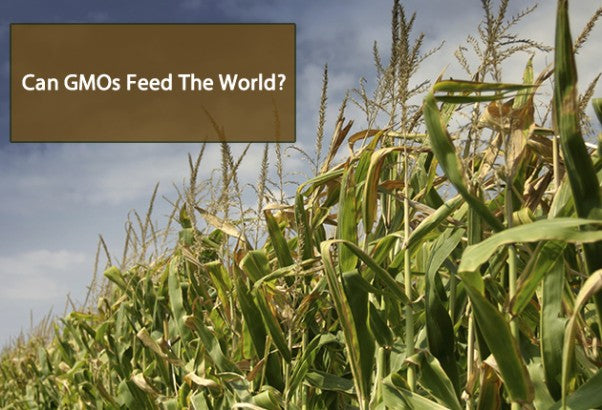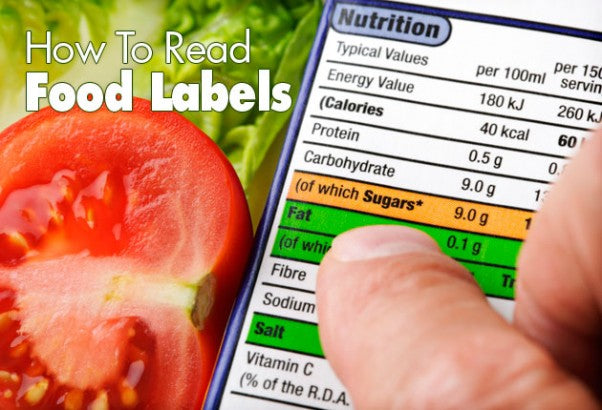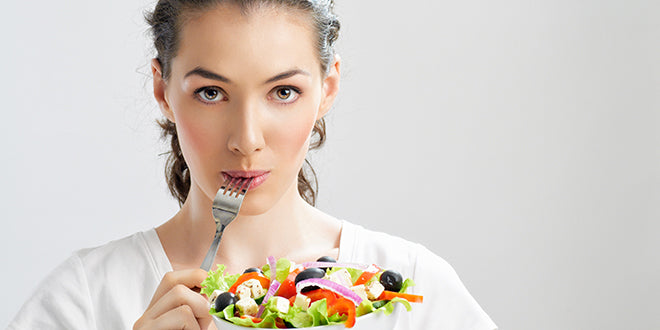Today is World Food Day! And this year's theme is "Sustainable Food Systems for Food Security and Nutrition". With all the promise of sustainable food and nutrition over the years regarding genetically modified foods (GMOs), one would think that the World Food Day website would be all about them, but there's hardly a mention of GMOs. Why not? Are GMO foods not all they're cracked up to be?
As consumers, and especially if you're on the Hallelujah Diet, we've all heard the negative horror stories of GMO foods - like the long term toxicity of a Roundup herbicide and a Roundup-toerlant genetically modified maize that caused giant cancer tumors in rats. Meanwhile, many others have come against such research claiming it to be inaccurate. Giant tumors in rats aside, let's pretend for a moment that GMO foods don't cause any health effects. Let's just get to the point: Are GMO foods good for the world, simply from a food security standpoint? Can they really solve the world's hunger, scarcity, and sustainability problems?
Back in the 1990s, one of Hallelujah Acres' current marketing department employees used to write advertisements for GMO canola (don't worry, he's seen the light and is becoming a naturopath, now). He told us:
"The promise of GMOs in the beginning was increased yields, fewer chemicals, and more nutritious crops. Those are all empty promises. The yields are simply not better and much more chemical has been used because the plant is resistant to the chemical (most often RoundUp herbicide), so farmers can spray their crops over and over again as much as they want without hurting the crop, but the crop still absorbs all of those chemicals. The plants actually end up having weaker root systems and, as a result, are less nutritious than organic crops."
Furthermore, farmers are lured into a "contract" system with GMO crops whereby they no longer own the seed they grow on their own land. Instead, the farmer signs a contract with the promise to sell all of the resulting crop back to the seed company. The farmer receives all of the seed and herbicide needed to grow the crop and is promised a guaranteed market for that crop once it is harvested.
For struggling, small farms trying to do everything on their own, this is a very tempting offer. But it means having to go back to the seed company every year to buy new seed, which goes against the seed-saving practice of farmers since the beginning of time. Not to mention, if the GMO plant pollinates a non-GMO plant in another farmer's field, that non-GMO plant becomes a GMO plant — and becomes the property of the GMO seed company. In fact, one farmer in Saskatchewan, Canada named Percy Schmeiser was one of the first people to experience this shocking reality in the mid-1990s. Pollen from his neighbor's GMO canola crop was carried by the wind into his non-GMO canola crop without his knowledge. At harvest time, his seed was routinely tested and he was accused of stealing GMO seeds because the GMO pollen had altered the DNA of his non-GMO crop, in effect, transforming it into a GMO crop. In the end, courts awarded 100% of his crop to the GMO seed company — regardless of the fact that only 5% of his field was infected.
This risk is cause for concern among farmers worldwide, especially those in poorer countries, whose very existence depends on saving seed for the following year. So, let's do a "food security" re-cap... No increase in GMO crop yield means no more food than there was with non-GMO crops. Not to mention, chemical use is increasing, not decreasing. And because of it, we now have herbicide-resistant "superweeds." To control superweeds, farmers are having to go back to an age-old herbicide called "2,4-D", which was one of the chemicals used in Agent Orange (used as a chemical weapon during the Vietnam War).
So, regardless of whether GMO foods create enough to eat or not, they're almost guaranteed to contain more chemical residue than other crops. In fact, while some GMO crops are bred to resist herbicide, others are genetically modified to include the herbicide as part of their DNA; when a bug eats the food, it kills the bug. These kinds of crops are not supposed to be dangerous to humans, but has there been enough time to claim such a thing, definitively? The jury is still out. GMO foods were supposed to feed a hungry world. But it looks as though they may end up having the opposite effect.
Want real food security? Buy organic (i.e., non-GMO). The more organic foods we as consumers buy, the fewer GMO foods we'll see in the produce section. Better yet, if you can do it, buy organic seeds and grow as much of your own food as possible. And when looking for supplements, make sure they're certified organic. Our Hallelujah Diet BarleyMax Capsules, for example, are are derived from organically grown young barley grass and alfalfa.
What are your thoughts on GMOs? Comment below or reach out to our experts to start a discussion that will lead to healthier choices.








